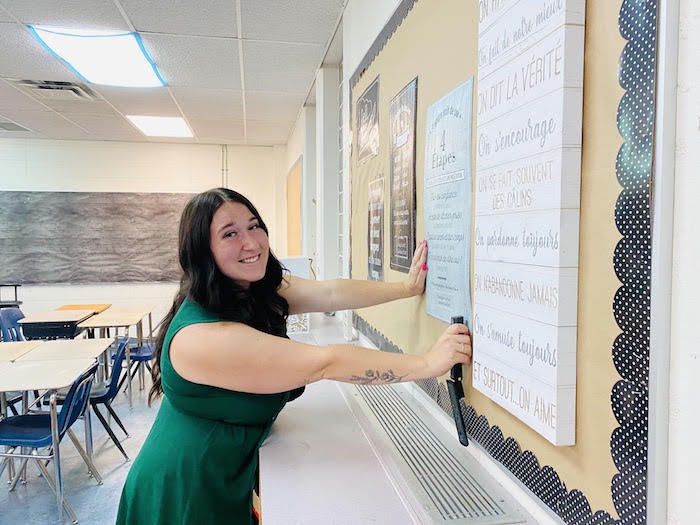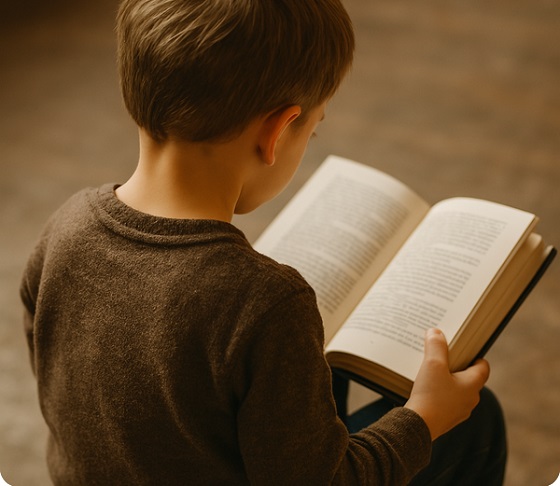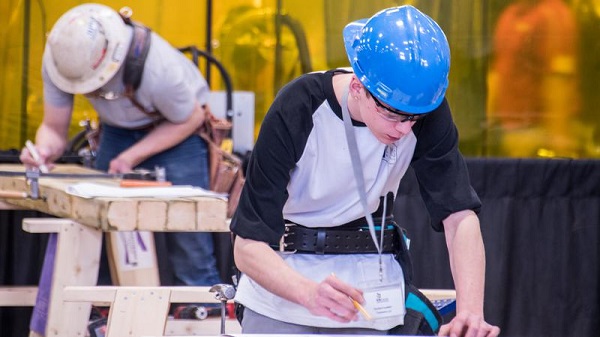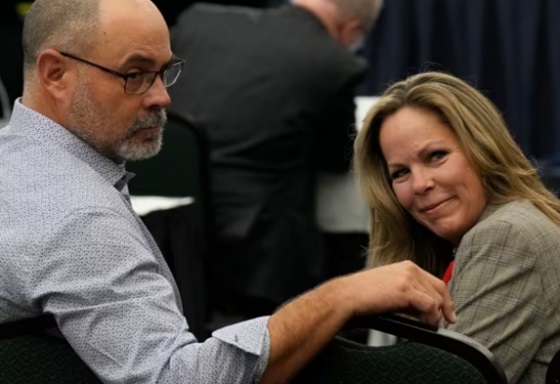Education
It’s back to school for 11,000 students and 1,500 staff at Red Deer Public

Red Deer Public Schools is ready and excited to welcome 11,000 students back to the classroom on Wednesday, August 31! Staff have been busy preparing their classrooms and schools since Thursday, August 25. It’s going to be a great year full of teaching, learning and inspiring students.
“We want to ensure all students in Red Deer Public have a great school year, and are able to achieve their very best,” said Chad Erickson, Superintendent. “The last two years have been a challenging way to start as Superintendent for Red Deer Public. Looking ahead to this year I want to move forward. I want to engage with and connect with our staff, students, parents and community, and sharing a vision and aspirations for students and staff will play a big role in that. Red Deer Public Schools is the best choice for all students and we will continue focusing on that and improving where we can by working together.”
That connection began last Friday, August 26, when all 1,500 Red Deer Public Schools staff took part in the Division’s Kick Off event, held at Lindsay Thurber Comprehensive High School. It was a morning of connection, inspiration and motivation as staff heard addresses from Superintendent Chad Erickson and Board Chair Nicole Buchanan. Themes included the importance of building relationships, having optimism, and believing in yourself.
BEST CHOICE
It’s an exciting time of year as school hallways will soon be buzzing with activity. In addition to seeing the faces of new students, Red Deer Public welcomes 30 new staff for the 2022/2023 school year. One focus area for the Division includes ensuring Red Deer Public is the BEST CHOICE by offering enhanced programming and meeting the needs and interest of students and families. This will be done through work by the Board of Trustees and community engagement this school year.
Red Deer Public will offer its newest choice to families this year….The Sports Academy. More than 300 students are enrolled in the Academy. In partnership with The Dome Red Deer, sports offered include:
-
Baseball/Softball
-
Soccer
-
Hockey
-
Sportfit (multi-sport opportunity)
“Our Sports Academy is one of many choices we look forward to offering our students and families. We want to ensure Red Deer Public Schools is the best choice for your children. They are going to get excellence in teaching and learning, with opportunities that will ensure they are well prepared for their future,” said Nicole Buchanan, Board Chair. “We offer a number of choices already that help students reach their full potential, and our Board is excited to offer this new program of choice.”
CURRICULUM
The start of the new school year also means a new curriculum for students in Kindergarten to Grade 3. Over the last six months, the Division’s Learning Services Coordinators, along with K-3 teachers have been actively reviewing the new curriculum to ensure they are prepared for a successful implementation as our top priority is excellence in teaching and learning in every classroom.
“When Kindergarten to Grade 3 students arrive in our classrooms for their first day of school tomorrow, they will be learning a new curriculum with excellent, engaging lessons as they always have in Red Deer Public,” said Erickson.
Meanwhile, Buchanan added Red Deer Public is looking forward to a year full of excellence in teaching and learning in every classroom.
“As we start the year, our Division and our priorities, which include Literacy and Numeracy, Equity, and Student Success and Completion, continue to be at the foundation of what we do and these have resulted in significant success,” she said. “Given the last 30 months, these priorities are even more vital as we begin this year. These priorities drive our day to day work and ensure that all students have the opportunity to reach their full potential.”
Education
Our Kids Are Struggling To Read. Phonics Is The Easy Fix

From the Frontier Centre for Public Policy
One Manitoba school division is proving phonics works
If students don’t learn how to read in school, not much else that happens there is going to matter.
This might be a harsh way of putting it, but it’s the truth. Being unable to read makes it nearly impossible to function in society. Reading is foundational to everything, even mathematics.
That’s why Canadians across the country should be paying attention to what’s happening in Manitoba’s Evergreen School Division. Located in the Interlake region, including communities like Gimli, Arborg and Winnipeg Beach, Evergreen has completely overhauled its approach to reading instruction—and the early results are promising.
Instead of continuing with costly and ineffective methods like Reading Recovery and balanced literacy, Evergreen has adopted a structured literacy approach, putting phonics back at the centre of reading instruction.
Direct and explicit phonics instruction teaches students how to sound out the letters in words. Rather than guessing words from pictures or context, children are taught to decode the language itself. It’s simple, evidence-based, and long overdue.
In just one year, Evergreen schools saw measurable gains. A research firm evaluating the program found that five per cent more kindergarten to Grade 6 students were reading at grade level than the previous year. For a single year of change, that’s a significant improvement.
This should not be surprising. The science behind phonics instruction has been clear for decades. In the 1960s, Dr. Jeanne Chall, director of the Harvard Reading Laboratory, conducted extensive research into reading methods and concluded that systematic phonics instruction produces the strongest results.
Today, this evidence-based method is often referred to as the “science of reading” because the evidence overwhelmingly supports its effectiveness. While debates continue in many areas of education, this one is largely settled. Students need to be explicitly taught how to read using phonics—and the earlier, the better.
Yet Evergreen stands nearly alone. Manitoba’s Department of Education does not mandate phonics in its public schools. In fact, it largely avoids taking a stance on the issue at all. This silence is a disservice to students—and it’s a missed opportunity for genuine reform.
At the recent Manitoba School Boards Association convention, Evergreen trustees succeeded in passing an emergency motion calling on the association to lobby education faculties to ensure that new teachers are trained in systematic phonics instruction. It’s a critical first step—and one that should be replicated in every province.
It’s a travesty that the most effective reading method isn’t even taught in many teacher education programs. If new teachers aren’t trained in phonics, they’ll struggle to teach their students how to read—and the cycle of failure will continue.
Imagine what could happen if every province implemented structured literacy from the start of Grade 1. Students would become strong readers earlier, be better equipped for all other subjects, and experience greater success throughout school. Early literacy is a foundation for lifelong learning.
Evergreen School Division deserves credit for following the evidence and prioritizing real results over educational trends. But it shouldn’t be alone in this.
If provinces across Canada want to raise literacy rates and give every child a fair shot at academic success, they need to follow Evergreen’s lead—and they need to do it now.
All students deserve to learn how to read.
Michael Zwaagstra is a public high school teacher and a senior fellow at the Frontier Centre for Public Policy.
Alberta
Province pumping $100 million into Collegiates and Dual-Credit hands-on learning programs

Alberta’s government is helping students discover their skills and interests today, to help them find careers for tomorrow.
If passed, Budget 2025 will provide more than $100 million over three years for school boards to grow career education programs, including funding for more collegiate and dual-credit programs across Alberta.
“We are working to set students up for success by strengthening job-focused education. This money is helping schools partner with businesses, universities and colleges to create programs that will help students hit the ground running after they graduate.”
Career education helps students gain credits towards graduation while earning hands-on experience in fields like the trades, computer programming, health care, agriculture, culinary arts and more. These career education programs support a strong economy by helping students learn the skills they need to get in-demand jobs.
Collegiate schools
Collegiate schools work with businesses, universities and colleges to offer classes that give students pathways to education and careers in the job of their choice. There are 12 collegiate schools in Alberta, offering many different types of programming for grades 7-12, including aviation, graphic design, trades and more.
If passed, Budget 2025 provides more than $21 million to school boards to help fund special classrooms like carpentry workshops, film and media rooms, science laboratories, heavy equipment simulators and aircraft hangars. Another $6 million is being invested to support the start-up costs for new collegiate schools.
Dual-credit programs
Budget 2025, if passed, also provides $4.6 million in 2025/26 to start new or improve existing dual-credit programs. In partnership with universities and colleges, dual-credit programs give students a head start on rewarding careers by allowing them to earn high-school and post-secondary credits at the same time. Of the $4.6 million, $550,000 is being provided by Alberta Seniors, Community and Social Services for new and improved dual-credit health care aide programs.
“Health care aides play a critical role in ensuring Albertans receive the continuing care services they need to maintain their health, independence and quality of life. Our investments into career pathways for health care aides will provide opportunities for young Albertans to develop the skills they need to build a rewarding career in Alberta’s continuing care workforce.”
Another $1.4 million is being invested to support students participating in off-campus career education programs through CAREERS. This non-profit connects students to jobs in high-demand fields, such as the trades, technology, health, forestry and agriculture.
“Investments in collegiate and dual-credit programming are significant for Calgary Catholic as they further strengthen our collegiate and dual-credit programming. This programming will open opportunities for our students and help them to realize their full potential.”
“Before Fusion Collegiate, I felt lost and wasn’t really sure what to do after high school. Thanks to its career-focused learning and the opportunities through Fusion and The Educational Partnership Foundation, I’m now working as a first-year apprentice plumber with Mr. Rooter. The hands-on trades training, high school credits, safety certifications, and real-world skills I picked up completely changed my life. I’m excited about where my career is headed and really thankful for the support that helped me get here.”
Budget 2025 is meeting the challenge faced by Alberta communities with continued investments in education and health, lower taxes for families and a focus on the economy.
Quick facts
- If passed, Budget 2025 invests $102.4 million over three years to provide sustainable, predictable career education funding, and to increase access to career education for Alberta students.
- This includes $8.4 million over 2026-27 and 2027-28 to raise awareness among students and families of career education programs and pathways available to Alberta students.
- Career education in Alberta includes career and technology courses, Career and Life Management (CALM), dual-credit courses, collegiate schools, apprenticeships and off-campus education programming.
- Since 2013, more than 95,000 high school students participated in at least one dual–credit course.
- In spring 2025, Alberta Education will engage with education partners on best practices to bring more career education opportunities to students.
- Since 2022, education partners and almost 5,000 Albertans have provided their feedback on career education and workforce needs.
Related information
-

 2025 Federal Election2 hours ago
2025 Federal Election2 hours agoMark Carney refuses to clarify 2022 remarks accusing the Freedom Convoy of ‘sedition’
-

 2025 Federal Election6 hours ago
2025 Federal Election6 hours agoPoilievre To Create ‘Canada First’ National Energy Corridor
-

 Bruce Dowbiggin4 hours ago
Bruce Dowbiggin4 hours agoAre the Jays Signing Or Declining? Only Vladdy & Bo Know For Sure
-

 2025 Federal Election5 hours ago
2025 Federal Election5 hours agoFixing Canada’s immigration system should be next government’s top priority
-

 Daily Caller3 hours ago
Daily Caller3 hours agoBiden Administration Was Secretly More Involved In Ukraine Than It Let On, Investigation Reveals
-

 Freedom Convoy2 days ago
Freedom Convoy2 days agoFreedom Convoy leaders Tamara Lich, Chris Barber found guilty of mischief
-

 COVID-192 days ago
COVID-192 days agoTrump’s new NIH head fires top Fauci allies and COVID shot promoters, including Fauci’s wife
-

 2025 Federal Election2 days ago
2025 Federal Election2 days agoWill Four More Years Of Liberals Prove The West’s Tipping Point?


